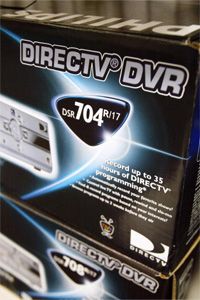When VCRs achieved mass-market success in the late 1970s and early 1980s, there was much hand-wringing among marketers about lost ad revenue. Why? Because people could use their VCRs to record shows, then play them back without watching commercials. Just push the fast-forward button and the commercials would zip by, reduced to unintelligible blurs wedged between sitcoms and sporting events.
As it turned out, VCRs didn't kill television advertising. But that didn't stop company execs and their ad agencies from working themselves into a fresh panic when DVRs hit the market in the late 1990s. DVR stands for digital video recorder, and like its analog, tape-based forefather, the device enables consumers to record their favorite shows to a hard drive and play them back later. A new generation of mad men trembled at the impending collapse of TV advertising. Why would anyone, they railed, watch those pesky commercials when he or she could speed through the ads to get back to the good stuff?
Advertisement
Now, as we enter the third era of television -- when we surf the Net and surf channels simultaneously -- the big question about whether DVRs will kill 30- and 60-second spots remains. The answer is as surprising as it is complicated.
The first thing to consider is household DVR penetration. Some experts predicted it would follow the trend established by Internet broadband, reaching 70 percent penetration. The latest consumer-technology study of U.S. and Canadian households conducted by Forrester Research, however, shows that DVR adoption is decelerating. At the end of 2011, market penetration of TiVo and other similar devices will be 34 percent, but by 2015, it will only be 40 percent [source: Neff]. That's far less than many projected just a couple of years ago, when DVR penetration seemed to gain 5 or 6 percentage points each year.
Next, people who do own DVRs don't use them the way you might expect. There's a perception that DVR owners prefer recorded programming over live TV, but usage statistics don't bear this out. A Zogby International poll from 2010 revealed that, among adults of all ages, 47 percent prefer to watch live TV, with 59 percent saying that's how they watch most often. Only 27 percent like to watch programs recorded on their DVRs, with 20 percent saying they watch that way most often [source: Dolliver].
Even if viewers fast-forward, all may not be lost for advertisers.
Advertisement



